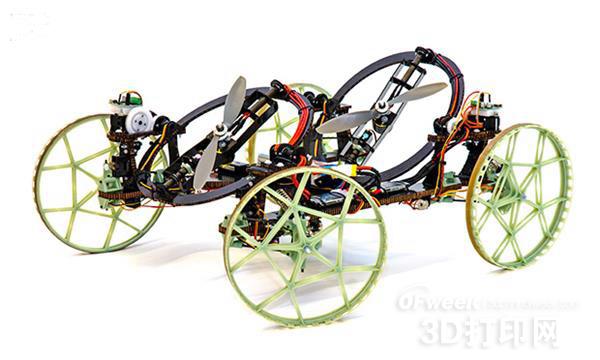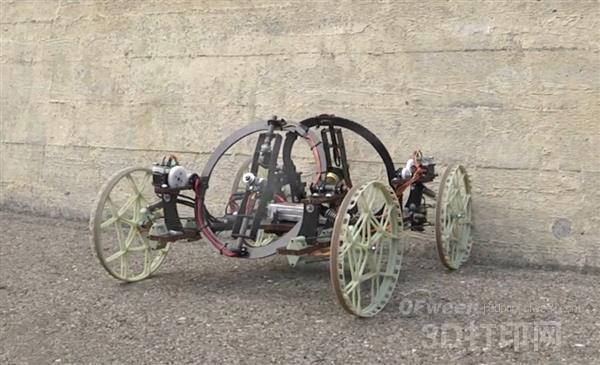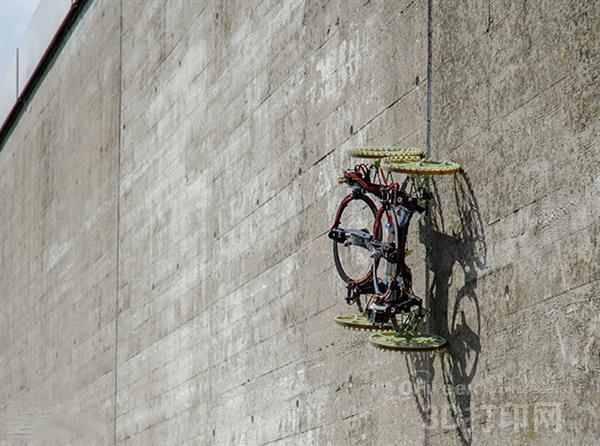A few days ago, Disney's research department in Zurich and the Federal Institute of Technology in Zurich teamed up to create a multi-sports wheeled robot, the VertiGo, which not only easily travels through a variety of rugged terrain, but can even fly away – on vertical walls. Walking as a flat. In fact, VertiGo relies on two rotatable propellers to get pressure on the wall, while carbon fiber material plus 3D printing components minimizes its weight, ensuring its speed and agility, and can move without regard to gravity. .
Unlike other robots that rely on suction or grab something to climb the wall, VertiGo's design uses its powerful propeller to create a downward force that allows the vehicle to easily drive its four wheels over rough terrain. And the conversion can be completed in a few seconds, climbing up the vertical high wall. It acts like a tail spoiler in a racing car or other aerodynamic device that produces a downward force that pushes the car firmly on the road.

And unlike a typical RC car, VertiGo doesn't rely on wheels to control the direction, but instead relies on two propellers like a helicopter. Disney explained that the choice of using two propellers instead of one is a key to VertiGo's ability to seamlessly transition from floor to wall: the force generated by the rear propeller pushes the robot against the wall and the front propeller produces forward forces.
Of course, another key to ensuring that VertiGo can easily climb the wall is to make it as light as possible, so that it doesn't require as much power and can move more flexibly. Researchers rely on 3D printing components to achieve this.

“The key issue in VertiGo robot design is how to maximize the ratio between thrust output and vehicle weight,†explains Disney Bears research scientist Paul Beardsley. “In order to minimize weight, we used a middle Carbon fiber bottom plate, and more complex 3D structure like wheel suspension or wheel, etc. We use 3D printing parts. The bottom plate carries two thruster modules, and all the electronic components are installed on the wheel suspension." Finally, The finished VertiGo is 60 cm long, but weighs no more than 2 kg.
“We used eight independently controlled actuators throughout the design. In order to allow the user to remotely control it as easily as a conventional remote control car, we also added a built-in computer to a controller.†Beardsley Added.

VertiGo's seamless transition from floor to wall gives it the ability to travel through urban and indoor environments. And most importantly, unlike other climbing robots, VertiGo can move on almost any surface, including glass, trees, curved walls, and even ceilings. And it's safer to control than many drones. The only problem is that the lithium-ion battery it currently uses can only last about 10 minutes, and researchers are currently working on it.

Friends may notice that the most recent period, Disney's department received a lot of significant progress in terms of 3D printers is people, such as has been disclosed out with interactive software robot can automatically generate 3D printing, the use of a flexible material and human security can Interactive robots, as well as robots that can walk like cartoon characters. But it can be seen that all of this is related to the company's Toys, merchandise or film production equipment. However, when it comes to the application of this robot that can fly away, Disney is a bit sloppy:
"About why Disney is interested in this area, I can't say too fine, you know. But in general, you can imagine the entertainment effect of a light robot," Beardsley said.
Dongguan Maimeng Cultural Communication Co., LTD , https://www.icollectoys.com